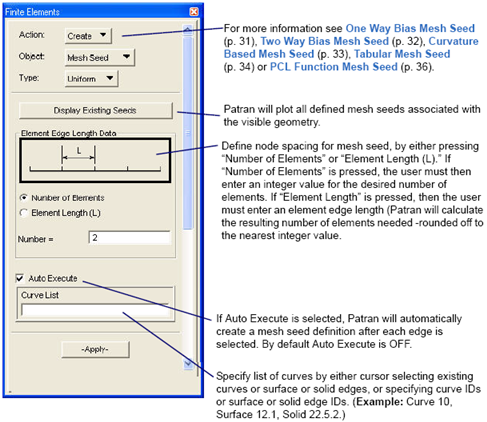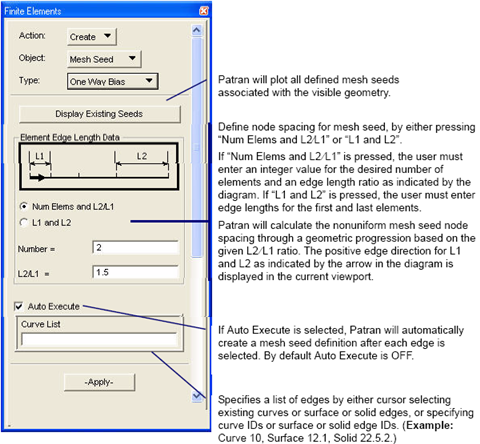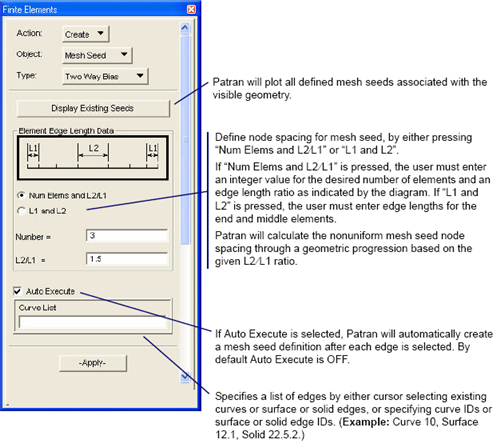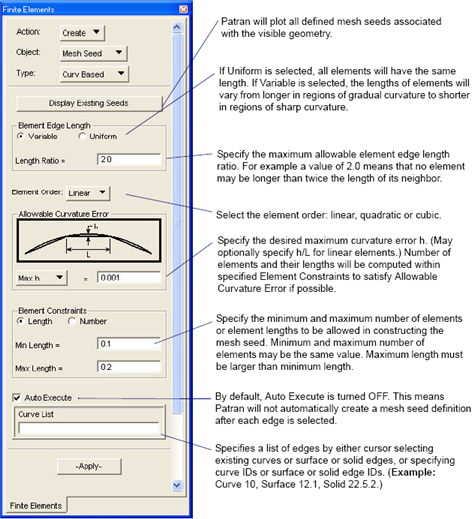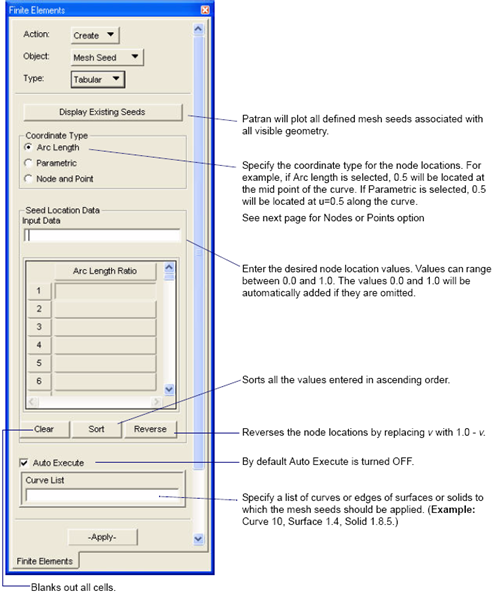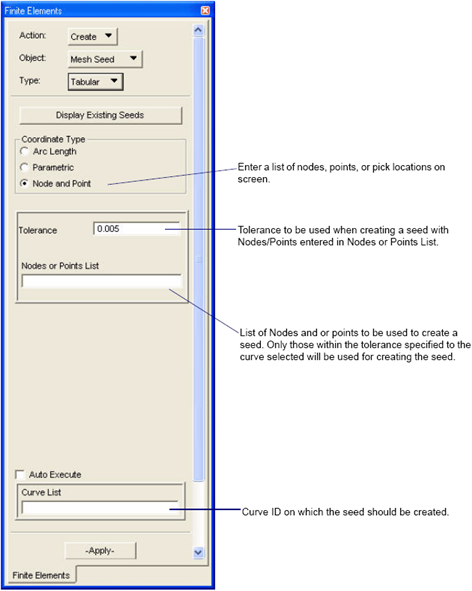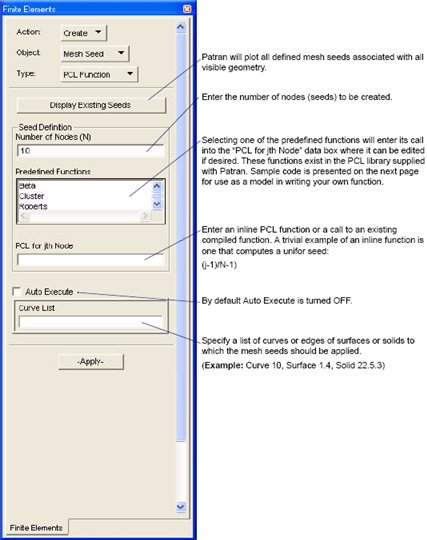XXXXXXXXXXXXXXXXXXXXXXXXXXXXXXXXXXXXXXXXXXXXXXXXXXXXXXXXXXXXXXXXXXXXXXXXXXXXXXXXXXXXXXXXXXXXXXXXXXXXXXXXXXXXXXXXXXXXXXXXXXXXXXXXXXXXXXXXXXXXXXXXXXXXXXXX''"> Mesh Seed and Mesh Forms
Creating a Mesh Seed
Creating a Mesh
Creating a Mesh Seed
There are many types of mesh seeds: uniform, one way bias, two way bias, curvature based, and tabular.
Uniform Mesh Seed
Create mesh seed definition for a given curve, or an edge of a surface or solid, with a uniform element edge length specified either by a total number of elements or by a general element edge length. The mesh seed will be represented by small yellow circles and displayed only when the Finite Element form is set to creating a Mesh, or creating or deleting a Mesh Seed.
One Way Bias Mesh Seed
Create mesh seed definition for a given curve, or an edge of a surface or solid, with an increasing or decreasing element edge length, specified either by a total number of elements with a length ratio, or by actual edge lengths. The mesh seed will be represented by small yellow circles and is displayed only when the Finite Element form is set to creating a Mesh, or creating or deleting a Mesh Seed.
Two Way Bias Mesh Seed
Create mesh seed definition for a given curve, or an edge of a surface or solid, with a symmetric non-uniform element edge length, specified either by a total number of elements with a length ratio, or by actual edge lengths. The mesh seed will be represented by small yellow circles and is displayed only when the Finite Element form is set to creating a Mesh, or creating or deleting a Mesh Seed.
Curvature Based Mesh Seed
Create mesh seed definition for a given curve, or an edge of a surface or solid, with a uniform or nonuniform element edge length controlled by curvature. The mesh seed will be represented by small yellow circles and is displayed only when the Finite Element form is set to creating a Mesh, or creating or deleting a Mesh Seed.
Tabular Mesh Seed
Create mesh seed definition for a given curve, or an edge of a surface or solid, with an arbitrary distribution of seed locations defined by tabular values. The mesh seed will be represented by small yellow circles and is displayed only when the Finite Element form is set to creating a Mesh, or creating or deleting a Mesh Seed.
PCL Function Mesh Seed
Create mesh seed definition for a given curve, or an edge of a surface or solid, with a distribution of seed locations defined by a PCL function. The mesh seed will be represented by small yellow circles and is displayed only when the Finite Element form is set to creating a Mesh, or creating or deleting a Mesh Seed.
The following is the PCL code for the predefined functions beta, cluster and robert. They can be used as models for writing your own PCL function.
Note: | An individual user function can be accessed at run time by entering the command: !!INPUT <my_pcl_function_file_name> A library of precompiled PCL functions can be accessed by: !!LIBRARY <my_plb_library_name> For convenience these commands can be entered into your p3epilog.pcl file so that the functions are available whenever you run Patran. |
Beta Sample
FUNCTION beta(j, N, b)
GLOBAL INTEGER j, N
REAL b, w, t, rval
w = (N - j) / (N - 1)
t = ( ( b + 1.0 ) / ( b - 1.0 ) ) **w
rval = ( (b + 1.0) - (b - 1.0) *t ) / (t + 1.0)
RETURN rval
END FUNCTION
Note: | j and N MUST be the names for the first two arguments. N is the number of nodes to be created, and j is the index of the node being created, where ( 1 <= j <= N ). |
Cluster Sample
FUNCTION cluster( j, N, f, tau )
GLOBAL INTEGER j, N
REAL f, tau, B, rval
B = (0.5/tau)*mth_ln((1.0+(mth_exp(tau)-1.0)*f)/(1.0+(mth_exp(-tau)-1.0)*f))
rval = f*(1.0+sinh(tau*((N-j)/(N-1.0)-B))/sinh(tau*B))
RETURN rval
END FUNCTION
FUNCTION sinh( val )
REAL val
RETURN 0.5*(mth_exp(val)-mth_exp(-val))
END FUNCTION
Roberts Sample
FUNCTION roberts( j, N, a, b )
GLOBAL INTEGER j, N
REAL a, b, k, t, rval
k = ( (N - j) / (N - 1.0) - a ) / (1.0 - a)
t = ( (b + 1.0) / (b - 1.0) )**k
rval = ( (b + 2.0*a)*t - b + 2.0*a ) / ( (2.0*a + 1.0) * (1.0 + t) )
RETURN rval
END FUNCTION
